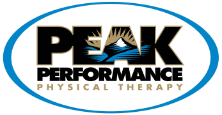Q: I just saw my doctor for a problem I've developed with back pain. I got a lot of positive messages like "there's no permanent damage" and I should "recover quickly and easily." I was told to stay active ("not too much rest") and given a booklet on self-care of back pain. That was it! Does that seem right to you? What about X-rays? Muscle relaxants? Something?!
A: The mystery of low back pain and how to treat it continues. Until scientists can pinpoint the exact cause of nonspecific low back pain, treatment is usually symptomatic: decrease pain as quickly as possible and restore normal movement. To that end, researchers have managed to find evidence-based clinical practice guidelines (CPGs) to direct conservative (nonoperative) care.
"Usual" care consists of spinal manipulation, soft tissue treatments, exercise, and education or advice. Care as outlined by evidence-based clinical practice guidelines follows what your physician has provided.
First and foremost, patients should receive advice and education.
Self-care is emphasized and information provided about the causes, course, expected course, and treatment of low back pain. Patients with acute (early onset) low back pain are encouraged to stay active and return to work as soon as possible.
The use of exercise therapy, massage, heat and cold, traction, corsets or supports, and electrotherapy is not supported. There isn't strong, consistent, or reliable evidence that these types of treatments are effective.
In a recent study from the School of Chiropractic and Sports Science in Perth, Australia chiropractors attempted to give meaningful numbers to results of treatment for acute low back pain. They compared two groups of patients who have experienced nonspecific low back pain of less than six weeks' duration. The two main measures of clinical outcome included disability scores and pain.
The results showed no difference in final outcomes at the end of four weeks. What was particularly striking was the fact that patients in the experimental group (following clinical practice guidelines) were significantly better after two weeks compared with the control group who received usual conservative care.
So for faster results which could mean getting back on-the-job or back to daily activities sooner than later, the evidence-based guidelines remain the first choice for treatment of acute episodes of low back pain.
The authors note that this 'less-is-more' approach recommended by your physician has been confirmed effective by other studies as well. X-rays are not recommended on the first visit unless the physician has reasons to think there might be a fracture or tumor. The reliance on drugs such as antiinflammatories and muscle relaxants is diminishing now, too based on research.
Reference: Gregory F. Parkin-Smith, MTech(Chiro), MSc, DrHC, et al. A Structured Protocol of Evidence-Based Conservative Care Compared with Usual Care for Acute Nonspecific Low Back Pain: A Randomized Clinical Trial. In Archives of Physical Medicine. January 2012. Vol. 93. No. 1. Pp. 11-20.
